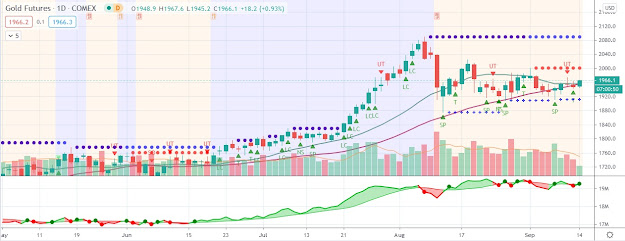Weakness in the price of gold is likely to be viewed as another correction before the gold bull market resumes
The gold price moved lower Friday morning, falling $4.85, or 0.3%, to $1,653.55 per ounce. The price of gold traded down to $1,640.32 in overnight trading but pared its losses as the U.S. dollar extended its decline against a basket of the world’s leading currencies. In contrast to the gold price, silver advanced modestly, by 0.3% to $32.59 per ounce. The gold price showed a muted reaction to the latest data on U.S. inflation, as the Consumer Price Index (CPI) for February rose to a ten-month high of 0.4%.
The gold price received a boost yesterday from Jan Hatzius, chief U.S. economist at Goldman Sachs. In a report to clients, Hatzius argued that despite the slightly more hawkish tone to this past week’s FOMC statement, he expects the Federal Reserve to launch a third round of quantitative easing (QE3) by June of this year.
“It has definitely become a closer call, but we still expect another asset purchase program that involves purchases of both mortgage-backed securities and Treasuries,” Hatzius wrote. “This would expand the Fed’s balance sheet, but its impact on the monetary base would likely be ‘sterilized.’ We expect this program to be announced in the second quarter, either at the April 24-25 FOMC meeting or the June 19-20 meeting.”
Hatzius subsequently addressed another point of contention by asking “Wouldn’t QE3 be inconsistent with the Fed’s observed reaction function over the past few years?” While he acknowledged that “at some level” it would be inconsistent, the Goldman Sachs economist noted that the FOMC currently contains even more dovish members than in past years. Additionally, Hatzius noted that “At the January 25 FOMC press conference, Chairman Bernanke seemed to indicate a materially lower threshold for additional easing when he said that he saw a ‘very strong case’ for more easing if the economy evolved in line with the SEP projections–which projected neither a large inflation undershoot nor a growth slowdown.”
In sum, if Hatzius’ forecast proves correct, the gold price is likely to receive a considerable tailwind in the form of further money printing by the Fed. Furthermore, judging by the prior two rounds of QE, the recent weakness in the price of gold is likely to be viewed as another correction before the gold bull market resumes.
The gold price received a boost yesterday from Jan Hatzius, chief U.S. economist at Goldman Sachs. In a report to clients, Hatzius argued that despite the slightly more hawkish tone to this past week’s FOMC statement, he expects the Federal Reserve to launch a third round of quantitative easing (QE3) by June of this year.
“It has definitely become a closer call, but we still expect another asset purchase program that involves purchases of both mortgage-backed securities and Treasuries,” Hatzius wrote. “This would expand the Fed’s balance sheet, but its impact on the monetary base would likely be ‘sterilized.’ We expect this program to be announced in the second quarter, either at the April 24-25 FOMC meeting or the June 19-20 meeting.”
Hatzius subsequently addressed another point of contention by asking “Wouldn’t QE3 be inconsistent with the Fed’s observed reaction function over the past few years?” While he acknowledged that “at some level” it would be inconsistent, the Goldman Sachs economist noted that the FOMC currently contains even more dovish members than in past years. Additionally, Hatzius noted that “At the January 25 FOMC press conference, Chairman Bernanke seemed to indicate a materially lower threshold for additional easing when he said that he saw a ‘very strong case’ for more easing if the economy evolved in line with the SEP projections–which projected neither a large inflation undershoot nor a growth slowdown.”
In sum, if Hatzius’ forecast proves correct, the gold price is likely to receive a considerable tailwind in the form of further money printing by the Fed. Furthermore, judging by the prior two rounds of QE, the recent weakness in the price of gold is likely to be viewed as another correction before the gold bull market resumes.




Comments
Post a Comment